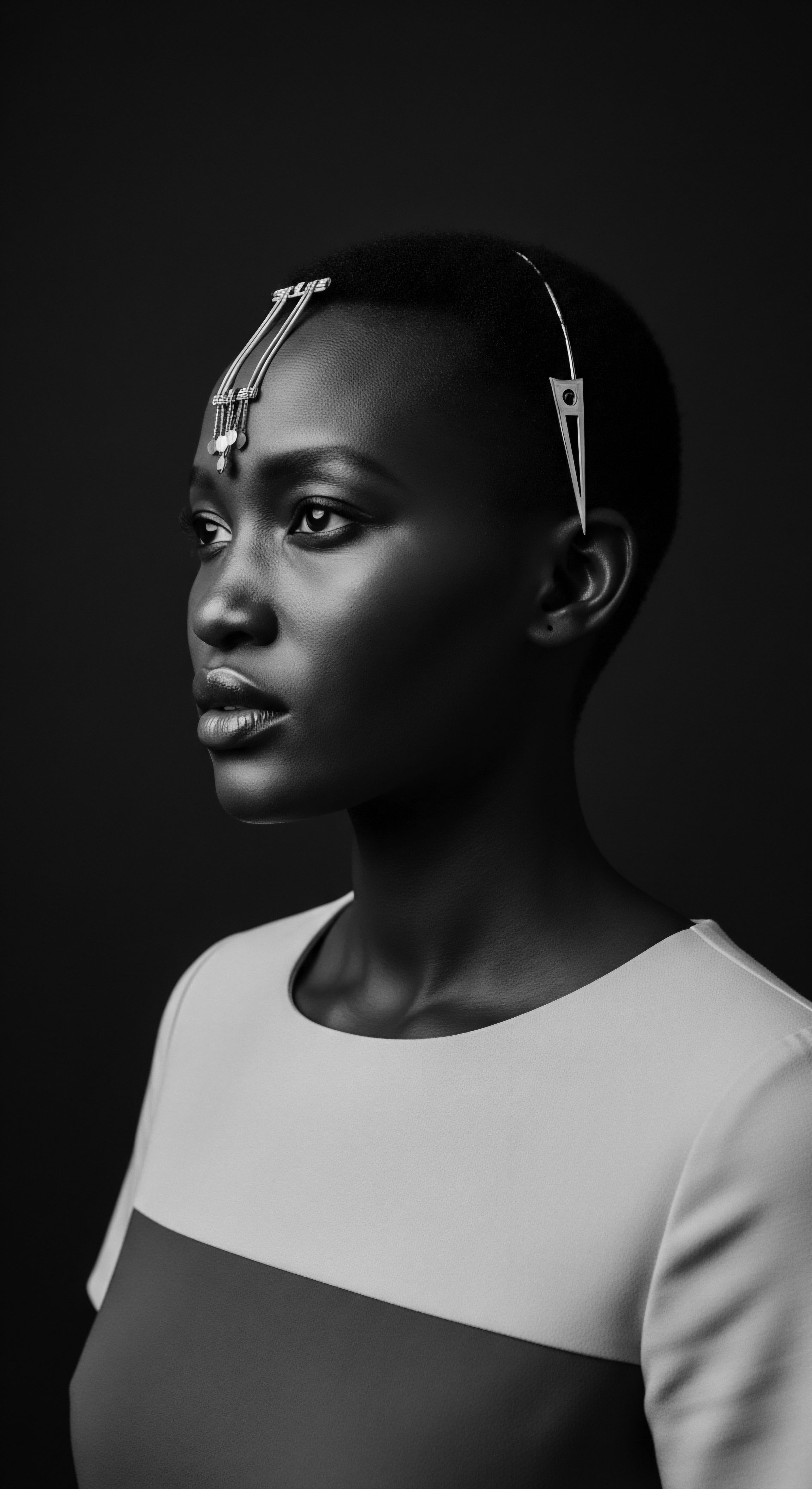
Fundamentals
The phrase ‘Silk Hair Protection,’ within Roothea’s lexicon, refers to the deliberate and conscious practice of safeguarding hair, particularly textured hair, from external stressors and damage. This concept extends beyond the mere use of silk fabric; it embodies a philosophy of gentle care, friction reduction, and moisture preservation, rooted deeply in ancestral wisdom and continuously affirmed by contemporary understanding. The fundamental notion is to create an environment where each strand can retain its inherent strength and vibrancy, honoring its natural inclination.
From the earliest records of human ingenuity, communities across the globe, especially those with hair textures prone to dryness and mechanical wear, sought ways to shield their crowns. These protective measures, whether through specific styling techniques or the application of natural coverings, formed the initial layers of what we now articulate as Silk Hair Protection. The practice acknowledges hair as a living extension of self, deserving of reverence and thoughtful maintenance.
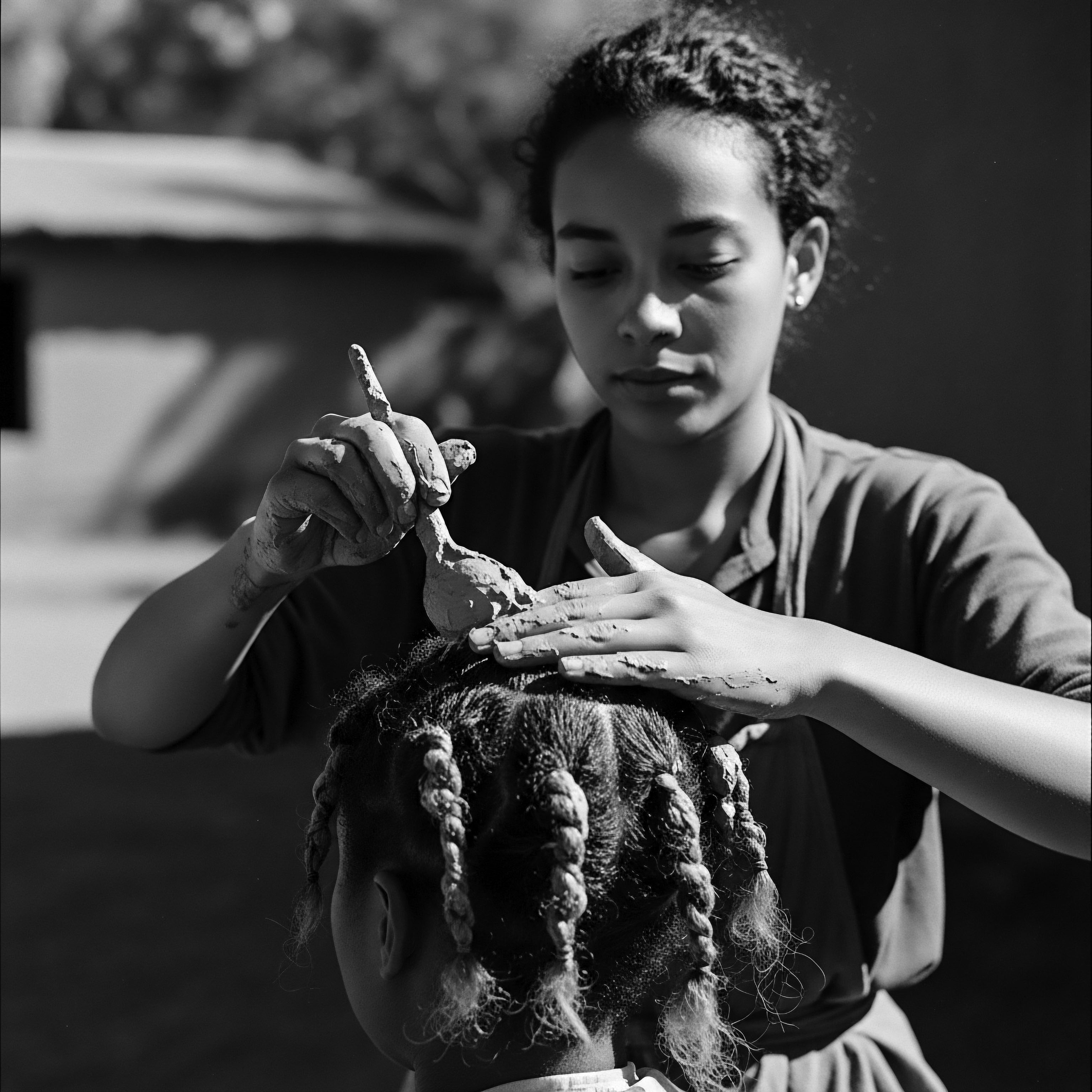
Early Echoes of Protection
Long before modern textiles or scientific laboratories, human societies developed rudimentary yet remarkably effective methods to guard their hair. These practices often involved readily available natural materials and communal knowledge passed through generations. The earliest forms of protection were born from observation ❉ how sun, wind, dust, and daily activities impacted hair’s integrity.
- Natural Coverings ❉ Animal skins, woven grasses, or broad leaves served as primary shields against environmental elements, particularly in arid or harsh climates.
- Plant-Based Oils ❉ Extracts from shea, coconut, and castor plants were applied to hair and scalp, forming a natural barrier against moisture loss and friction. Ancient Egyptians, for example, used almond and castor oils to keep their hair smooth and moisturized.
- Braiding and Twisting ❉ These styles, dating back thousands of years in African cultures, offered a structural means of protection by keeping hair strands grouped, reducing tangling and exposure.
These foundational approaches underscore the enduring significance of preserving hair health, a wisdom that transcends time and geography. The understanding of hair’s elemental biology, its vulnerability, and its capacity for resilience was, and remains, a shared human experience.
Silk Hair Protection, at its core, represents an ancient, intuitive understanding of safeguarding hair’s inherent vitality against the rigors of daily existence.
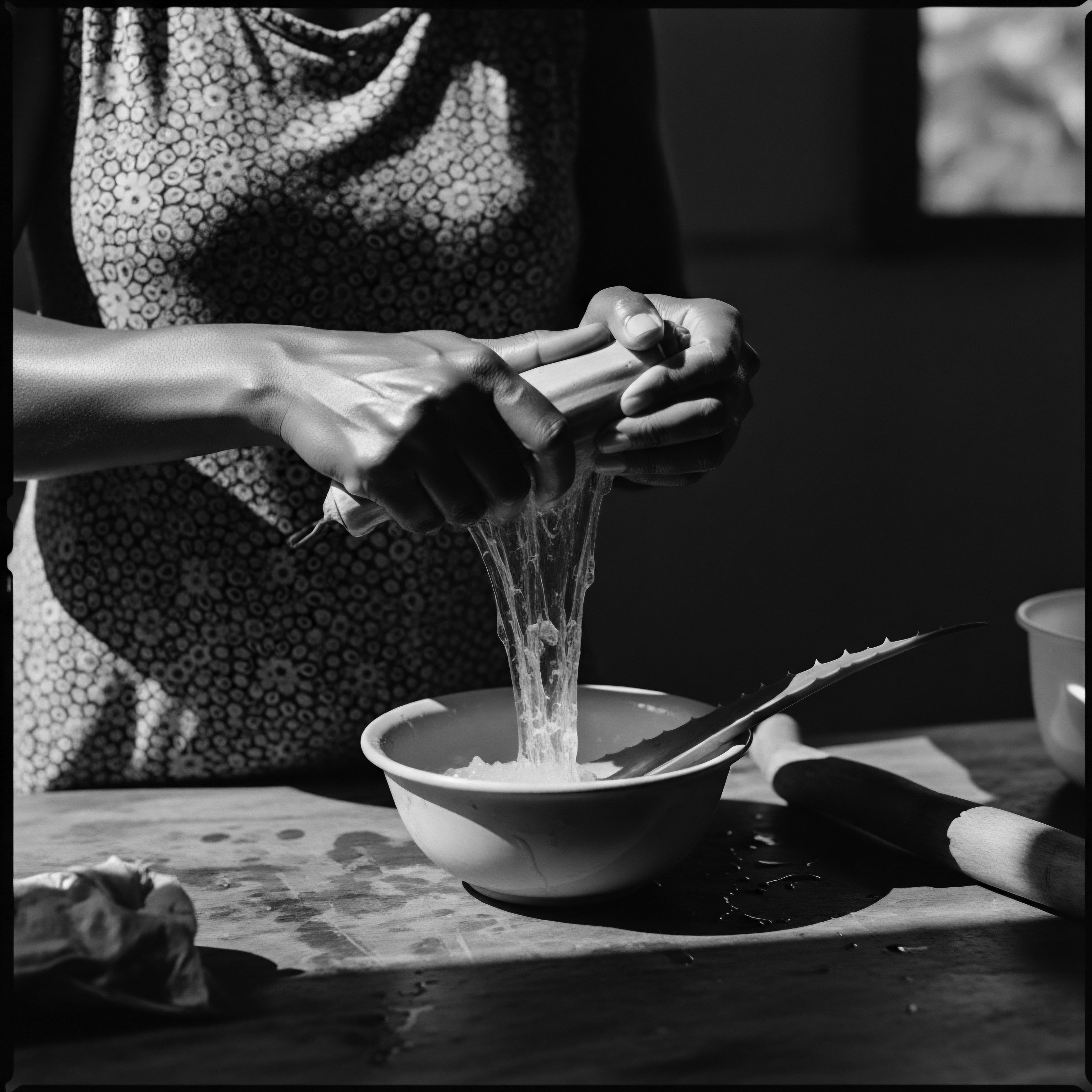
The Biology of Vulnerability
Hair, particularly textured hair, possesses a unique architecture that makes protective measures especially vital. The outermost layer, the cuticle, acts as a shield, composed of overlapping scales. For Afro-textured hair, these cuticle layers tend to be fewer and naturally more raised compared to straighter hair types, making them more susceptible to damage from friction and environmental factors. This structural reality means textured strands can lose moisture more readily and are more prone to tangling and breakage.
Understanding this biological predisposition guided ancestral practices. The desire to maintain the integrity of the cuticle, to keep it smooth and flat, was an unspoken driver behind the use of smooth fabrics and careful styling. The purpose of Silk Hair Protection, therefore, extends beyond mere aesthetics; it is a profound recognition of hair’s delicate structure and a commitment to its longevity.
| Material Plant Fibers (e.g. woven grass, cotton) |
| Traditional Use for Hair Head coverings, rudimentary wraps for daily wear. |
| Underlying Protective Principle Shielding from sun, dust, and physical abrasion. |
| Material Natural Oils (e.g. shea butter, castor oil) |
| Traditional Use for Hair Applied to strands and scalp for moisture. |
| Underlying Protective Principle Lubrication, moisture sealing, and environmental barrier. |
| Material Smooth Fabrics (e.g. early forms of linen) |
| Traditional Use for Hair Headwraps, sleeping coverings. |
| Underlying Protective Principle Reducing friction, retaining moisture, cleanliness. |
| Material These foundational elements reveal a continuous legacy of care, adapting natural resources to safeguard hair's well-being. |
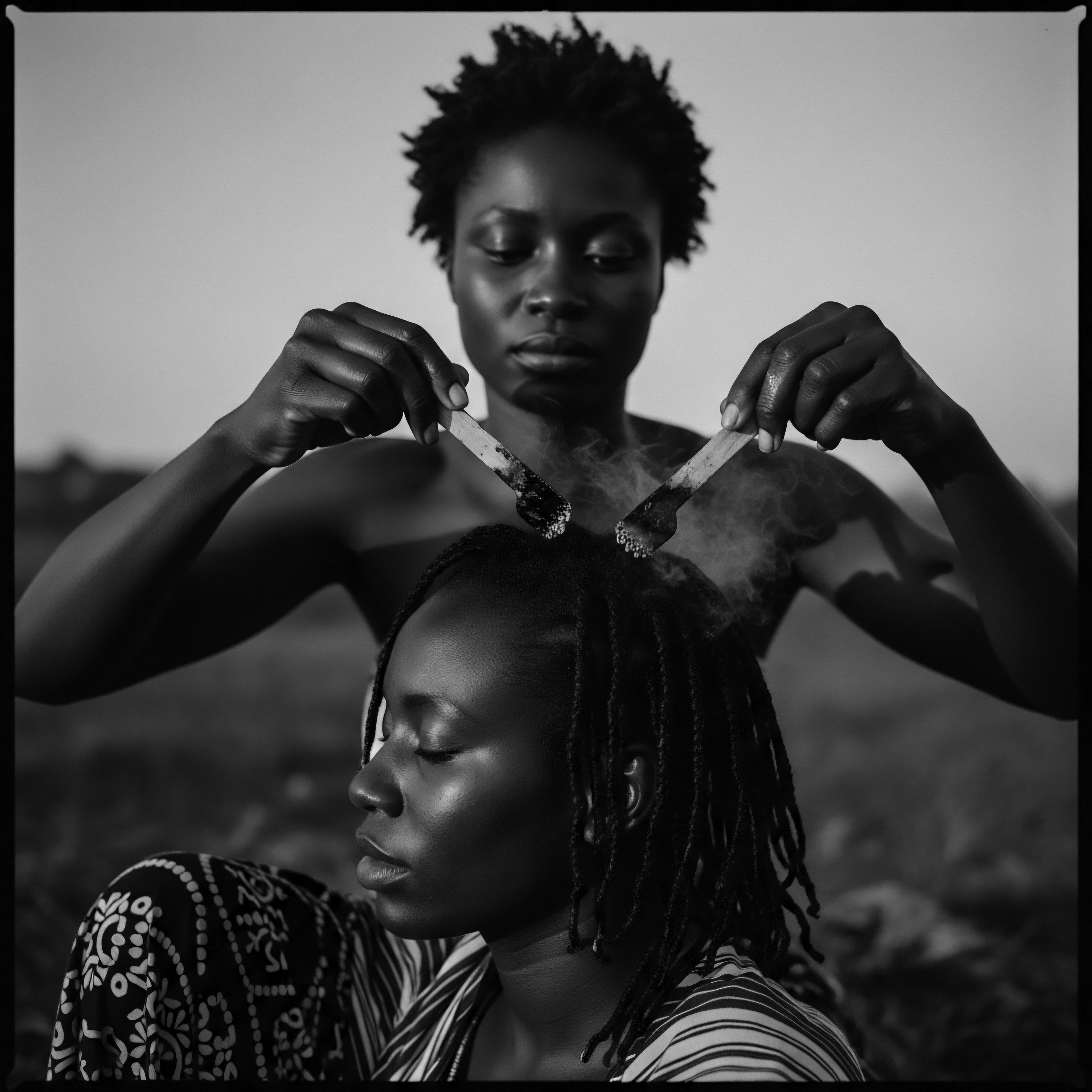
Intermediate
Moving beyond foundational concepts, the intermediate understanding of ‘Silk Hair Protection’ recognizes its evolution from simple shielding to a culturally resonant practice, particularly within the vast tapestry of textured hair experiences. This encompasses not only the physical protection offered by smooth materials but also the profound cultural significance embedded within these acts of care. The meaning expands to include how communities adapted and innovated protective methods, transforming them into expressions of identity, status, and resilience.
The very concept of hair protection gained layers of social and symbolic meaning across generations. What began as a practical necessity transformed into a cultural statement, a silent language spoken through adornment and ritual. This deeper appreciation acknowledges the dynamic interplay between hair biology, environmental factors, and the lived experiences of diverse communities.
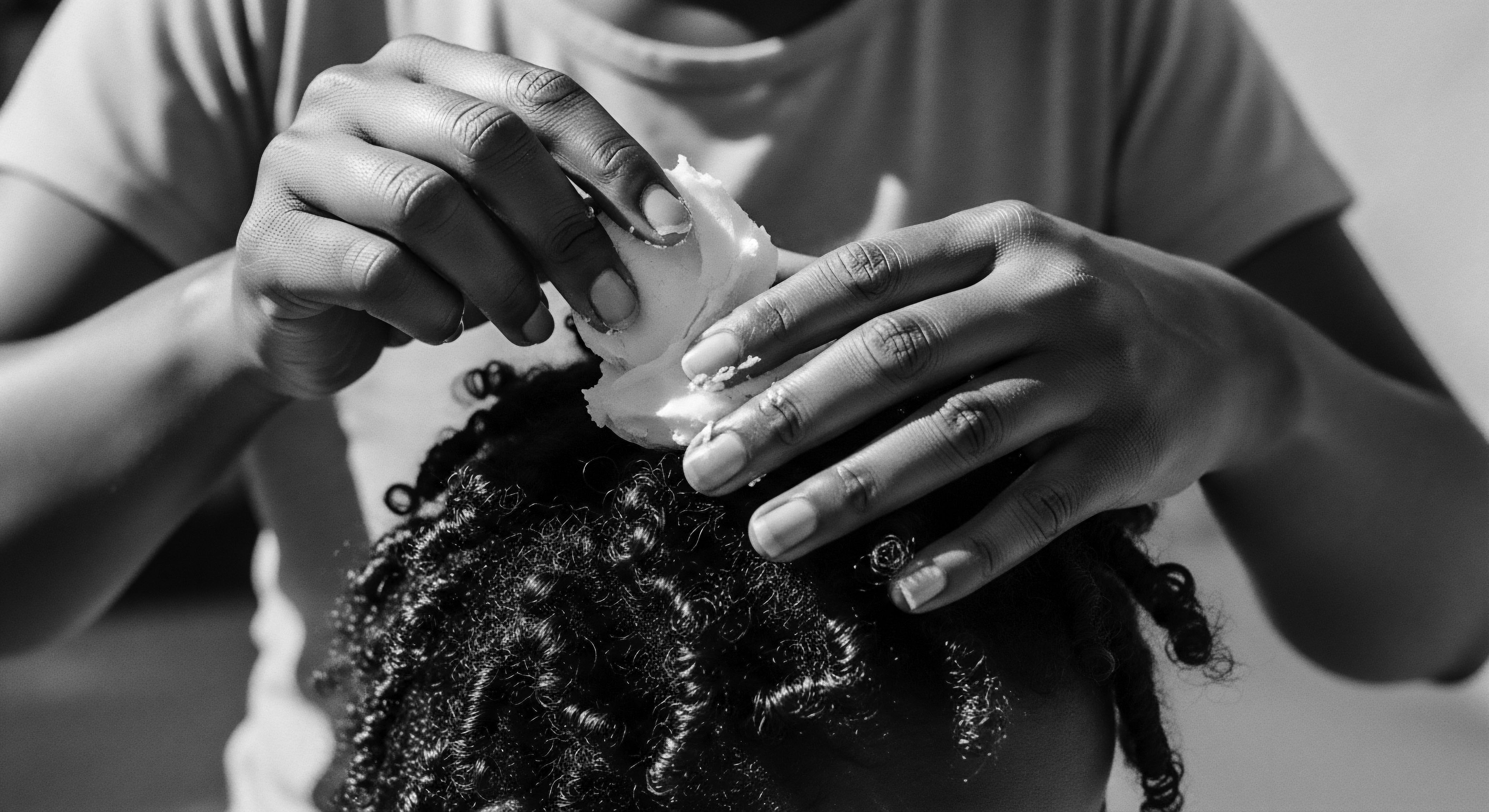
The Tender Thread of Tradition
In many African societies, hair was never merely an aesthetic feature; it served as a powerful communicator of age, marital status, social rank, wealth, and tribal affiliation. Elaborate braiding patterns and the use of specific head coverings were integral to this communication. When Africans were forcibly displaced during the transatlantic slave trade, they carried these traditions as an unbreakable link to their heritage.
During this harrowing period, hair protection took on new, critical dimensions. Enslaved women, stripped of their possessions and often subjected to dehumanizing practices, continued to wrap their hair. This act provided practical protection from harsh sun and arduous labor, while also serving as a quiet, powerful act of resistance and cultural preservation. Headwraps, though sometimes enforced as symbols of subservience, were ingeniously re-appropriated, becoming statements of dignity and covert communication.
Hair wrapping became a profound symbol of cultural endurance, transforming from a tool of oppression into a beacon of self-determination.
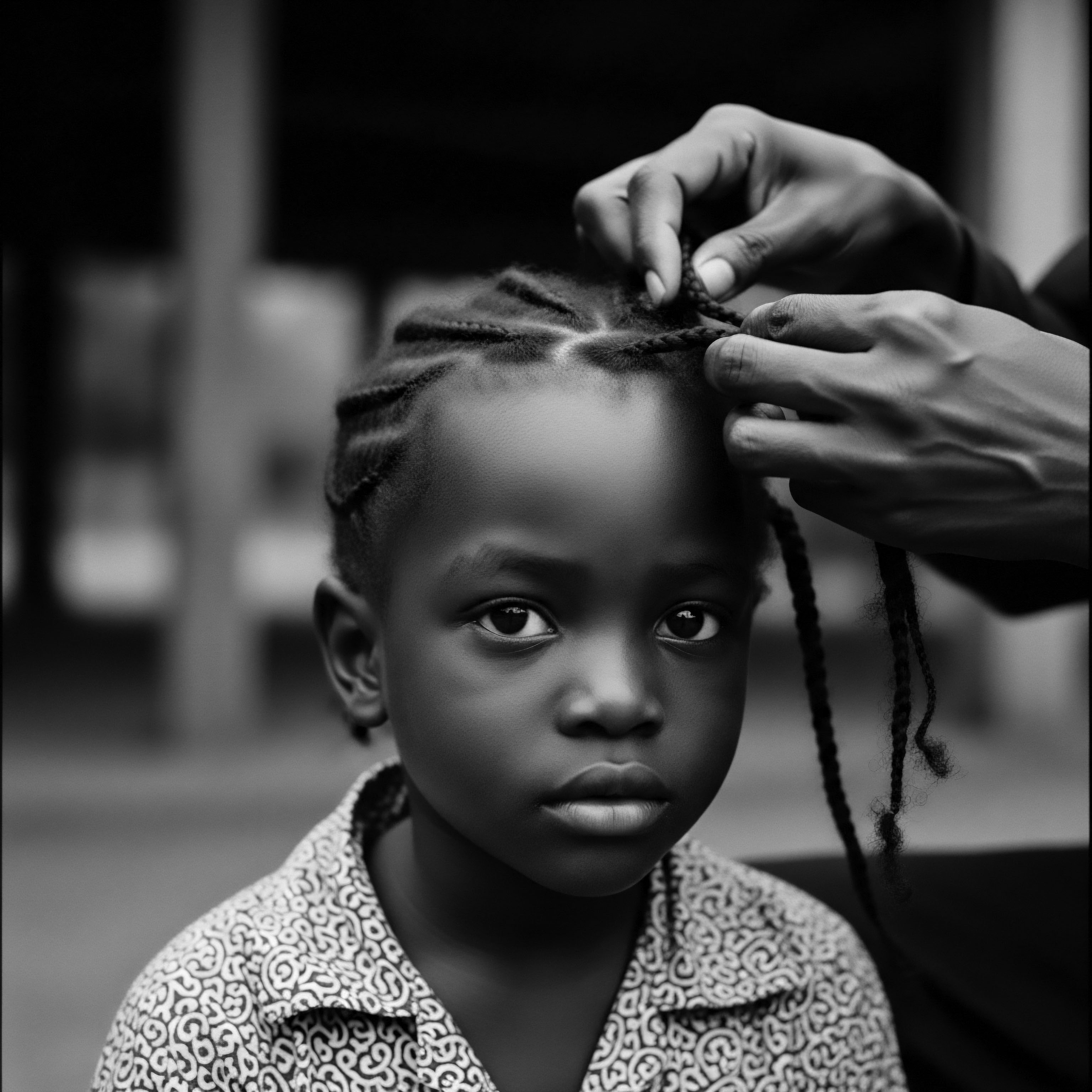
Evolution of Protective Practices in the Diaspora
The forced migration to the Americas led to a unique adaptation of hair care. Traditional materials were often scarce, compelling ingenuity. Pieces of clothing, once mundane, became essential headscarves, safeguarding hair and retaining moisture under brutal conditions. This resourceful adaptation speaks volumes about the resilience and creativity embedded within textured hair heritage.
Over time, as communities formed and reformed, these practices continued to evolve. The headwrap, known by names like ‘gele’ in Nigeria, ‘duku’ in Ghana, and ‘doek’ in South Africa, remained a constant, its style and fabric conveying different meanings and asserting identity. The very act of hair wrapping became a communal ritual, a shared moment of care and connection that transcended the harsh realities of their existence.
- Pre-Colonial Africa ❉ Headwraps and braided styles communicated social standing, marital status, and spiritual affiliations.
- Transatlantic Slave Trade ❉ Head coverings served as protection from elements during forced labor and became a means of cultural resistance and covert communication.
- Post-Emancipation Era ❉ Headwraps sometimes symbolized a move away from the perceived stigma of slavery, yet they also continued as a practical and cultural statement.
- Modern Revival ❉ The natural hair movement in recent decades has seen a resurgence of headwraps and protective styles, celebrated for their cultural significance and hair health benefits.
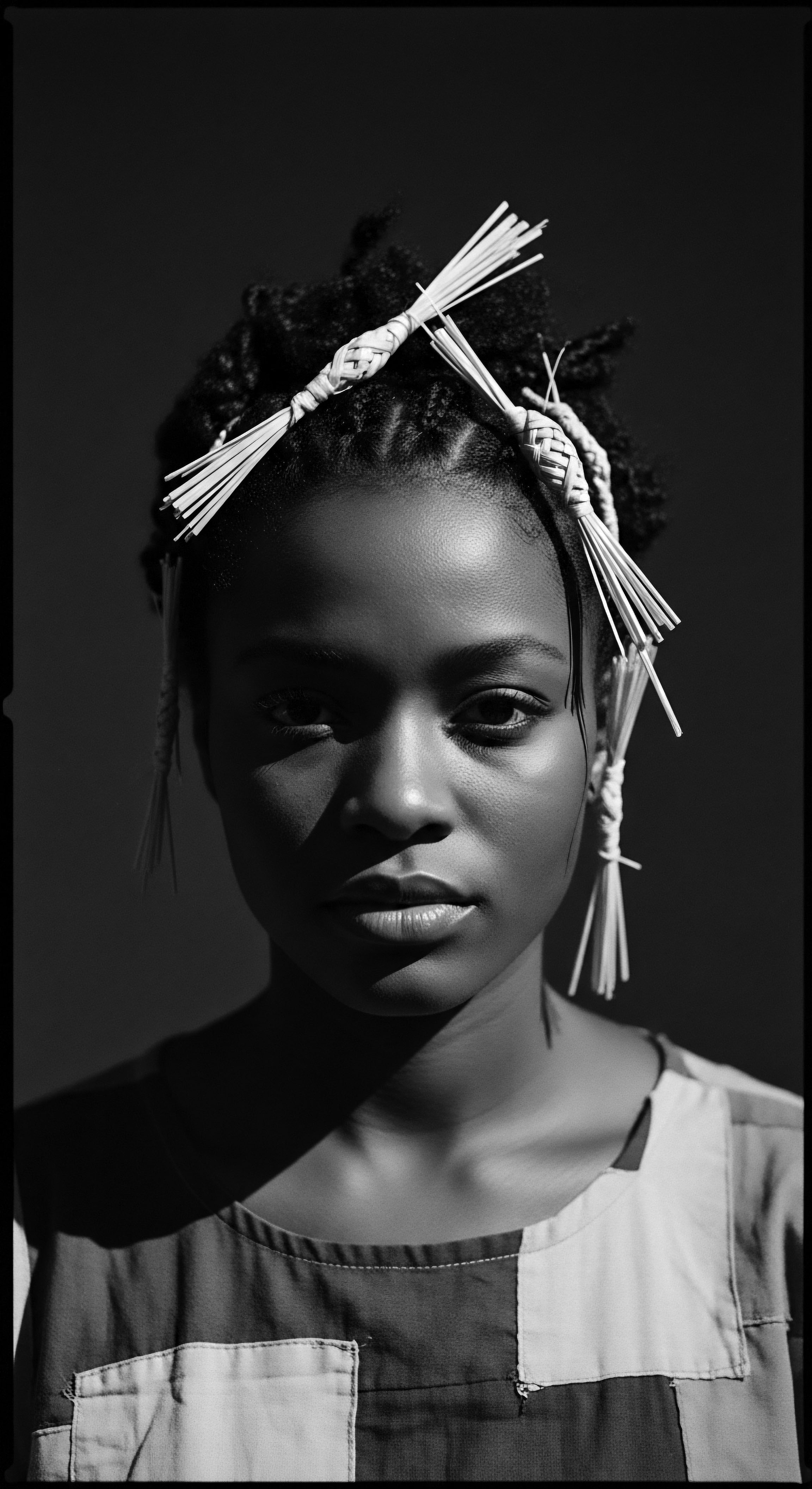
The Science of Surface and Structure
At an intermediate level, understanding Silk Hair Protection involves a deeper appreciation for the physical interaction between hair and its environment. Textured hair, with its unique elliptical cross-section and coiled structure, experiences more friction against surfaces than straighter hair types. This increased friction leads to cuticle damage, moisture loss, and ultimately, breakage.
The principle behind using smooth materials, like silk, is to minimize this friction. Silk’s smooth fibers reduce snagging and pulling on the hair shaft, preserving the cuticle’s integrity. Beyond friction, silk possesses a natural ability to regulate moisture, helping hair retain its hydration without over-drying it. This duality—friction reduction and moisture balance—forms the scientific underpinning of Silk Hair Protection, validating the intuitive wisdom of ancestral practices.
| Traditional Practice Wearing Headwraps (smooth fabrics) |
| Observed Benefit (Ancestral Wisdom) Keeps hair neat, clean, and prevents tangles. |
| Scientific Explanation (Modern Understanding) Reduces mechanical friction, minimizes cuticle lifting, and protects from environmental pollutants. |
| Traditional Practice Applying Natural Oils |
| Observed Benefit (Ancestral Wisdom) Softens hair, adds shine, prevents dryness. |
| Scientific Explanation (Modern Understanding) Provides a lipid barrier, seals in moisture, and reduces protein loss. |
| Traditional Practice Braiding and Twisting Hair |
| Observed Benefit (Ancestral Wisdom) Hair stays contained, less manipulation, retains length. |
| Scientific Explanation (Modern Understanding) Minimizes daily handling, reduces friction between strands, and allows for moisture retention. |
| Traditional Practice These interconnected approaches highlight a continuous lineage of care, where ancient methods find resonance in contemporary scientific insights. |
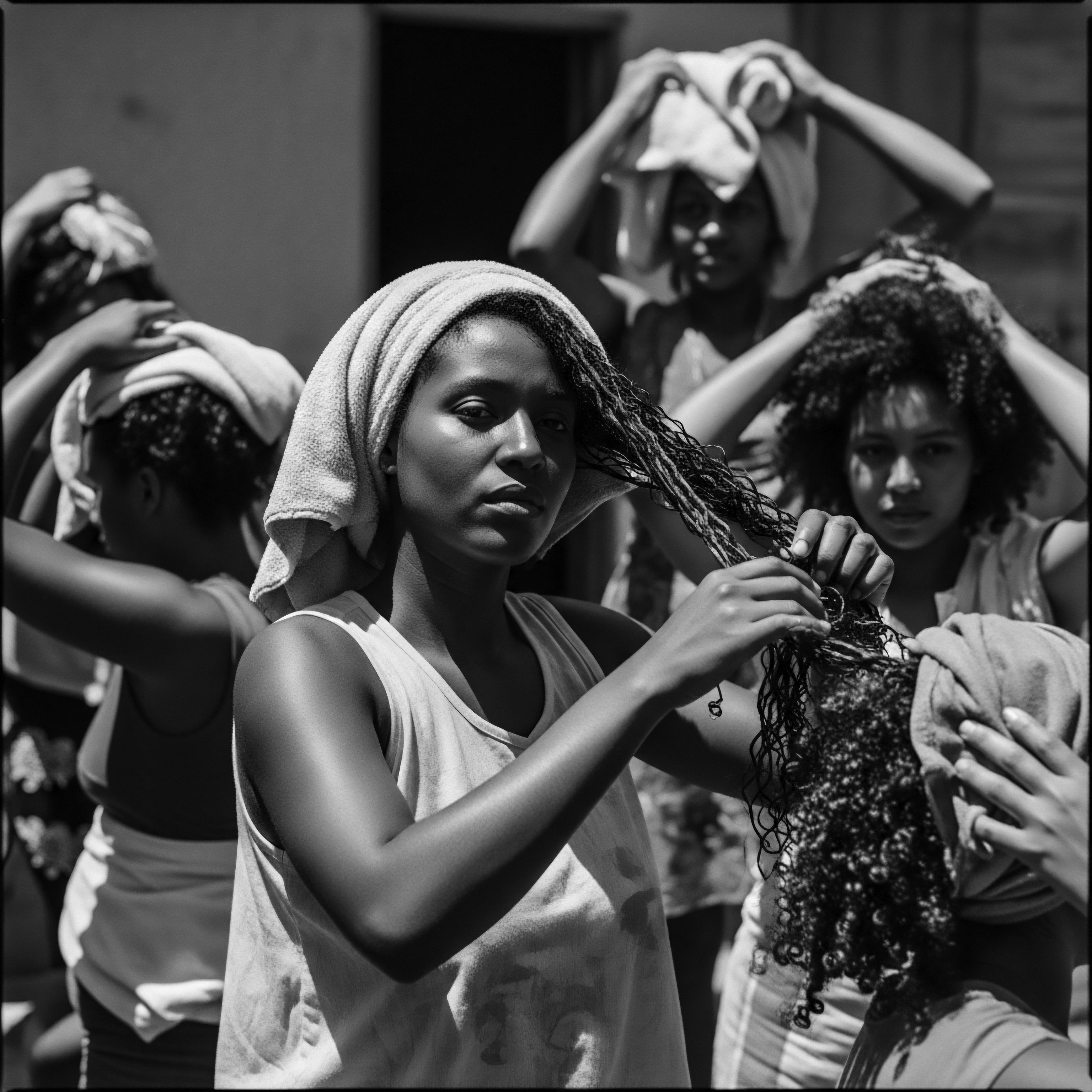
Academic
The academic delineation of ‘Silk Hair Protection’ transcends a mere description of materials or techniques; it represents a complex interplay of material science, cultural anthropology, historical resilience, and the psychodynamics of identity. This concept denotes a strategic, intentional engagement with hair care that prioritizes the structural integrity and moisture equilibrium of textured hair, employing methods that mitigate environmental and mechanical stressors while simultaneously affirming cultural lineage. Its meaning is rooted in a profound recognition of the inherent vulnerabilities of coiled and kinky hair textures, coupled with an enduring commitment to ancestral practices that offer safeguarding and symbolic affirmation. This perspective acknowledges that the choice of protective measures, particularly those involving smooth surfaces or contained styles, carries both tangible physiological benefits and deep socio-cultural resonance, reflecting a continuum of knowledge passed through generations.
To truly grasp the comprehensive scope of Silk Hair Protection, one must analyze its diverse perspectives, acknowledging the multi-cultural aspects and interconnected incidences that have shaped its contemporary understanding. The concept is not static; it is a dynamic construct that has adapted to various socio-historical contexts, particularly within the African diaspora, where hair has frequently served as a site of both oppression and profound resistance. The application of this protective ethos is therefore a living archive, continuously re-interpreting ancestral wisdom through modern scientific lenses.
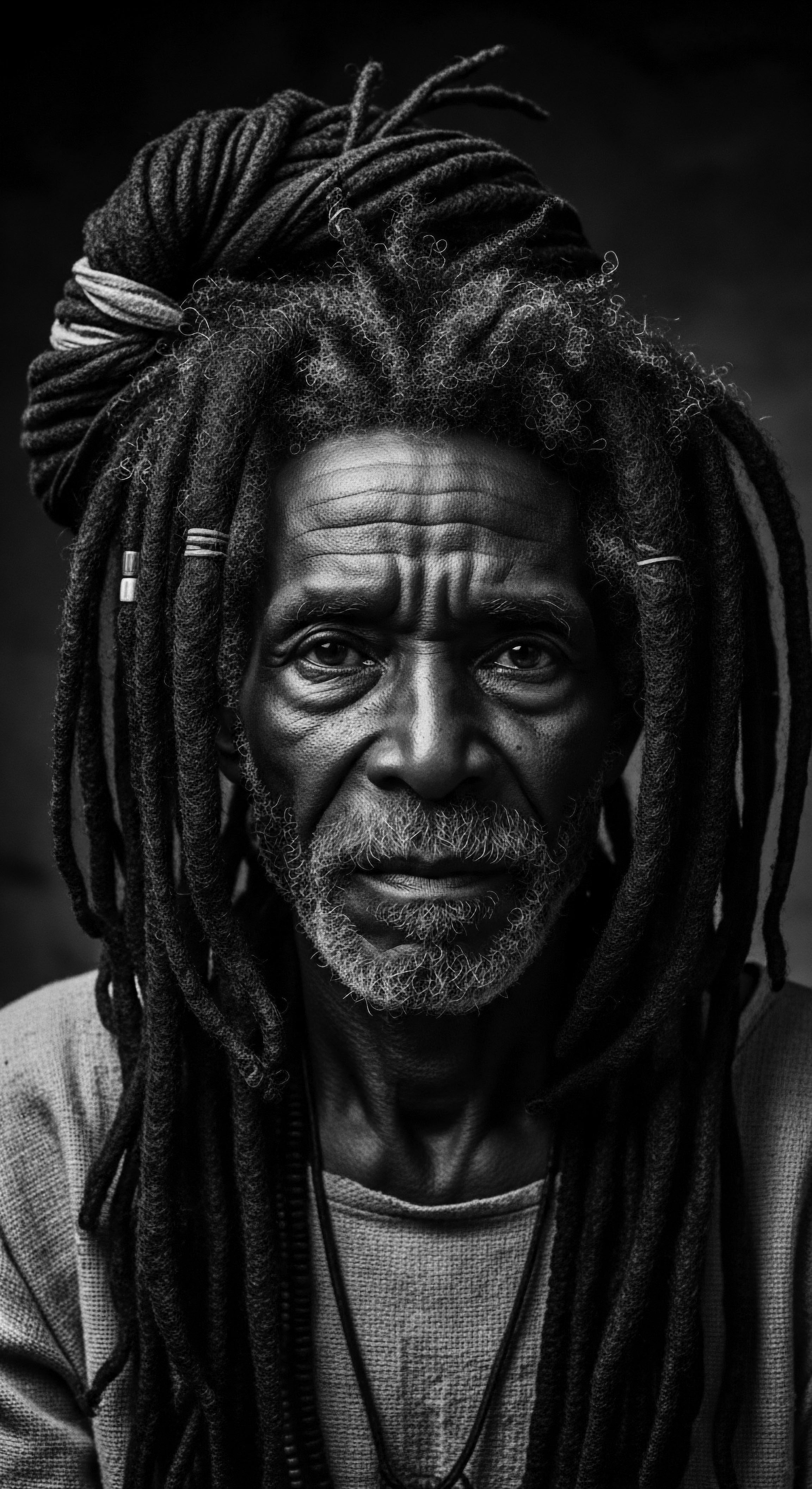
Material Science and Hair Morphology
The effectiveness of Silk Hair Protection is intricately linked to the unique morphological characteristics of Afro-textured hair. Unlike straighter hair types, which possess a more circular or oval cross-section, coiled hair exhibits a flattened elliptical shape. This distinct geometry, combined with fewer cuticle layers that are prone to lifting, renders textured hair particularly susceptible to friction-induced damage, moisture loss, and mechanical breakage. When hair strands rub against rough surfaces, such as cotton pillowcases or abrasive fabrics, the raised cuticles become further disrupted, leading to frizz, split ends, and a compromised outer barrier.
Here, the scientific understanding of silk’s properties becomes critical. Silk fibers, primarily composed of Fibroin and Sericin proteins, possess a remarkably smooth surface and a low coefficient of friction. When textured hair encounters silk, the reduced drag minimizes the mechanical stress on the cuticle, preserving its flattened state and thus maintaining the hair’s protective barrier.
Furthermore, silk’s inherent hygroscopic properties allow it to absorb less moisture from the hair compared to other materials, thereby aiding in the retention of essential hydration, a persistent challenge for hair types where natural sebum struggles to traverse the tightly coiled shaft. The molecular structure of hydrolyzed silk proteins, when incorporated into hair products, can even penetrate the hair shaft, improving elasticity and reinforcing its resilience against breakage.
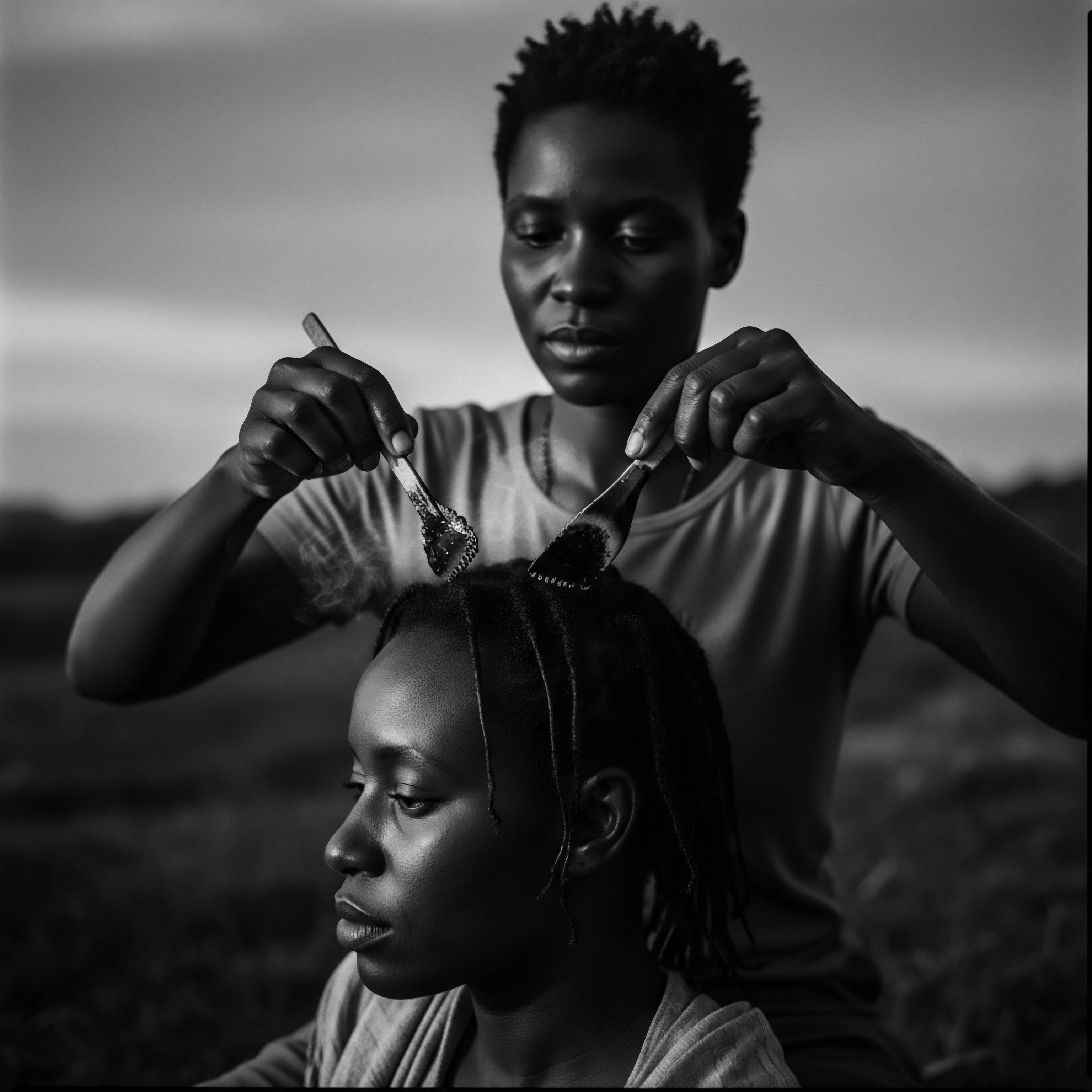
Cultural Cartographies of Care ❉ The Tignon Laws as a Case Study
The enduring significance of Silk Hair Protection, especially for Black and mixed-race hair experiences, is powerfully illuminated by the historical context of the Tignon Laws in late 18th-century Louisiana. This specific historical example offers a compelling lens through which to examine how protective practices, even when imposed as instruments of subjugation, were transformed into potent symbols of cultural resilience and self-determination.
In 1784, Governor Esteban Rodriguez Miró of Louisiana enacted legislation known as the Tignon Laws, mandating that free Black women, who often adorned their hair with elaborate styles and luxurious accessories, cover their heads with a kerchief or ‘tignon.’, The intent behind these laws was overtly discriminatory ❉ to diminish the perceived attractiveness and social status of Black women, thereby curbing their social and economic competition with white women. This legal imposition sought to enforce a visual hierarchy, forcing Black women to conform to a standard of subservience.
The Tignon Laws, intended as a badge of inferiority, inadvertently catalyzed an extraordinary demonstration of Black women’s ingenuity and cultural fortitude.
However, the response from these women was not one of defeat but of remarkable defiance and creative adaptation. Instead of allowing the tignon to signify their subjugation, they transformed it into a powerful statement of style, identity, and resistance. They sourced the most opulent fabrics available—silks, satins, and Madras cloth—and styled their tignons with an artistic flair that made them even more striking than the uncovered hairstyles they were meant to obscure. These elaborate headwraps became crowns of sartorial and cultural agency, conveying messages of wealth, status, and an unyielding spirit.
This act of re-appropriation is a profound illustration of how communities can subvert oppressive measures, transforming tools of control into expressions of autonomy and beauty. The tignon, initially a symbol of forced humility, was re-imagined as a vibrant emblem of Black womanhood, demonstrating an enduring legacy of creativity in the face of adversity. This historical episode provides concrete evidence of how the principle of ‘hair protection’—in this case, forced covering—was infused with layers of meaning far beyond its superficial purpose, becoming a conduit for preserving cultural identity and asserting dignity.
The legacy of the Tignon Laws resonates within contemporary Black hair experiences, where headwraps and protective styles continue to serve multiple functions. They shield hair from environmental damage and manipulation, thereby promoting hair health, while simultaneously serving as powerful affirmations of cultural heritage and individual style. This historical precedent underscores the deep, often unspoken, connections between hair care practices, social justice, and personal expression within diasporic communities. It exemplifies how ‘Silk Hair Protection’ extends beyond a simple product application; it represents a continuum of ancestral knowledge, strategic adaptation, and an unwavering commitment to self-preservation and cultural pride.
This nuanced understanding is further supported by sociological studies that explore the symbolic grammar of hair among women of African descent. Sybille Rosado’s work (2003) posits that hair and hairstyles represent a set of rituals practiced throughout the diaspora, highlighting the socio-cultural role hair continues to play among Black people. The choices women make about their hair are imbued with meaning beyond mere aesthetics, serving as a means of communication and connection across geographical and temporal divides.
The act of braiding, for instance, was not just a practical way to manage hair; it was a silent language, a form of coded communication, and a way to pass down stories and traditions, even escape routes during slavery. This underscores the profound depth of protective practices within textured hair heritage, where every strand and every style holds a narrative.
| Historical Context Late 18th-century Louisiana; free Black women's rising social and economic presence. |
| Intent of Legislation To diminish the perceived attractiveness and social status of Black women; to enforce visual hierarchy. |
| Black Women's Response & Re-Appropriation Used luxurious fabrics and elaborate styling to transform headwraps into symbols of defiance, status, and cultural pride. |
| Historical Context This historical incident showcases the profound capacity of Black women to transform oppressive mandates into powerful expressions of identity and enduring heritage. |
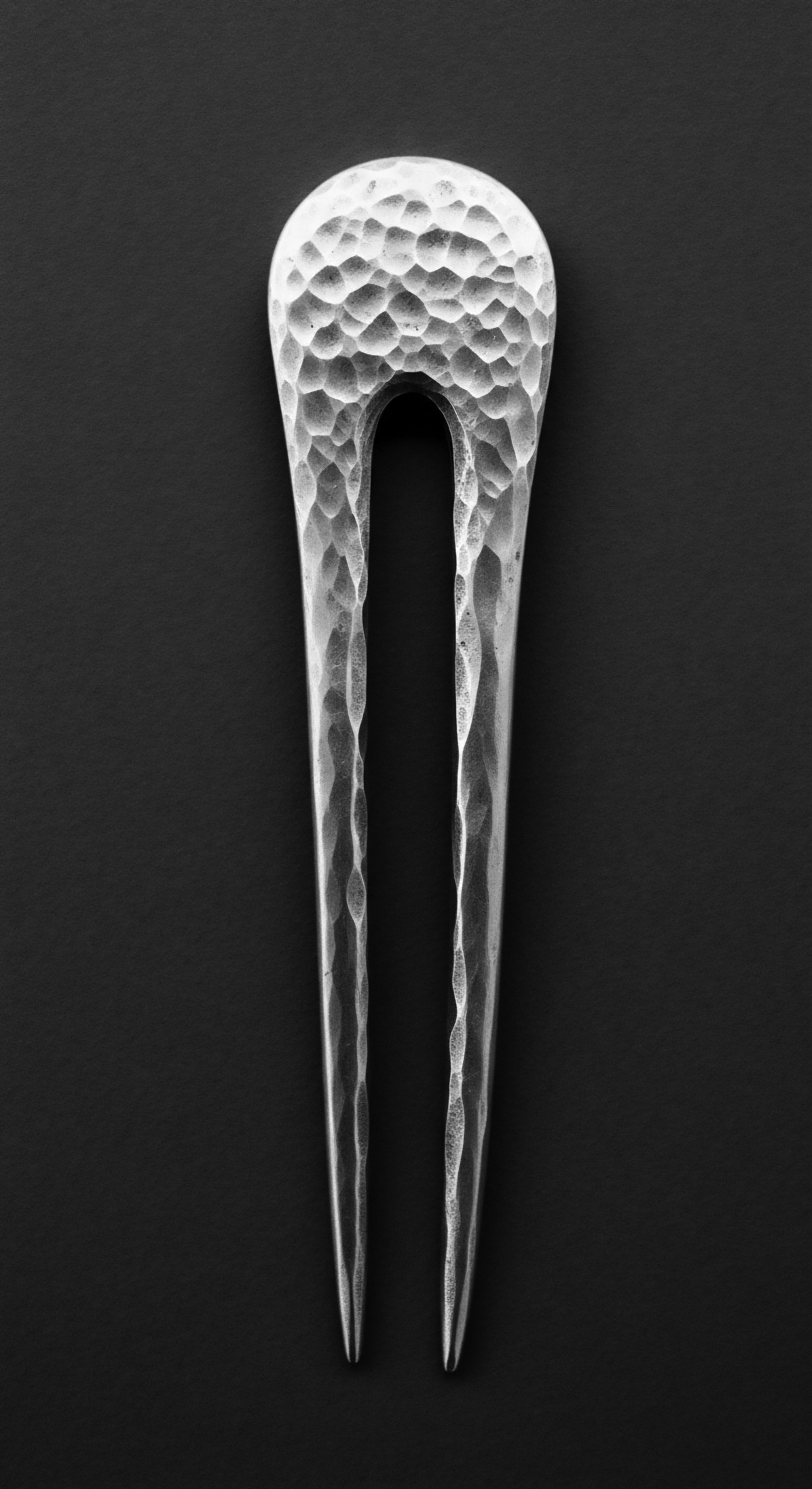
Reflection on the Heritage of Silk Hair Protection
The journey through the meaning of ‘Silk Hair Protection’ reveals more than just a concept of hair care; it unearths a profound meditation on heritage, resilience, and the enduring spirit of textured hair. From the primal need for elemental safeguarding to the sophisticated acts of cultural affirmation, this protective ethos has flowed like a river through generations, carrying with it the wisdom of ancestors and the innovation of those who came after. Each smooth scarf, every carefully chosen oil, and each meticulously crafted protective style whispers stories of survival, identity, and profound self-love. The very act of caring for textured hair, especially through methods that minimize friction and preserve moisture, becomes a dialogue with history, a conscious choice to honor the legacy of those who navigated immense challenges while maintaining their crowns.
This continuous thread of care, from ancient African communities to contemporary diasporic spaces, embodies the ‘Soul of a Strand’ ethos. It reminds us that hair is not merely a biological appendage; it is a living, breathing archive of cultural memory, a testament to an unbroken lineage of beauty and strength. The pursuit of Silk Hair Protection, whether through literal silk or the principles it represents, is a sacred practice. It connects us to the ingenuity of our forebears, who, with limited resources, instinctively understood the delicate nature of their hair and devised ingenious ways to preserve it.
Their practices, now validated by modern science, form the bedrock of our current understanding. This legacy teaches us that true care is holistic, encompassing physical well-being, cultural pride, and an unwavering belief in the inherent beauty of textured hair.
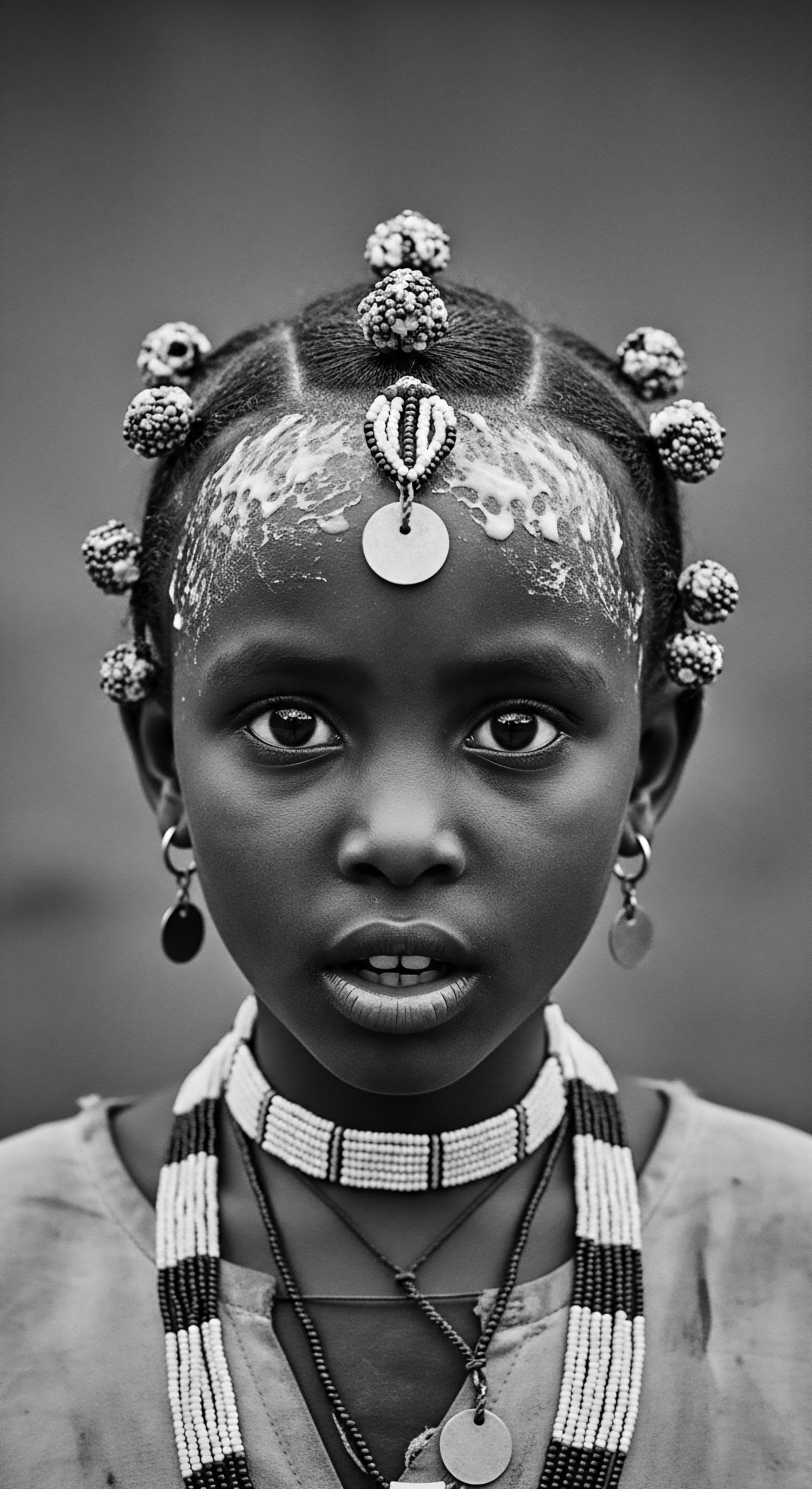
References
- Arie, I. (2006). I Am Not My Hair. Universal Records.
- Byrd, A. D. & Tharps, L. (2014). Hair Story ❉ Untangling the Roots of Black Hair in America. St. Martin’s Griffin.
- Chapman, K. L. (2014). Black women’s natural hair care communities ❉ social, political, and cultural implications. Smith College.
- Cooper, M. (1994). Louis McDowell gives Michael Young a haircut, the cut is called a “high-top fade”. Library of Congress.
- Erasmus, Z. (2000). Race, Identity, and Other Dilemmas ❉ The Politics of Race in South Africa. Kwela Books.
- Lester, N. A. (2000). Black women’s hair and African American culture in the eighteenth and nineteenth centuries. The Journal of Southern History, 61(1), 45-76.
- Miró, E. R. (1784). Edict of Good Government. Louisiana Colonial Archives.
- Rosado, S. (2003). The symbolic grammar of hair ❉ An exploration of Black women’s hair experiences. The Journal of Black Psychology, 29(1), 61-75.
- Thompson, A. (2009). Black women and the politics of hair. Palgrave Macmillan.
- Turner, P. A. (2004). Whispers on the Color Line ❉ Rumor and Race in America. University of California Press.
- Wyche, K. F. & Graves, S. B. (1992). Minority women in academia ❉ access and barriers to professional participation. Psychology of Women Quarterly, 16(4), 429-437.
